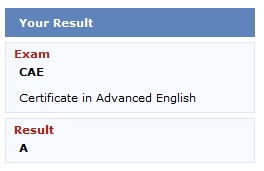I am pleased to report that I passed the Cambridge Certificate in Advanced English with the Grade “A”. Of course I am very pleased with the results and Cambridge states that:
Grade A, which demonstrates an ability at Council of Europe Level C2
Nonetheless, I hope to improve my language skills even further and hopefully get more proficient with the English language. But of course, this certificate is also a good way to show my proficiency in English to any employer that might come along…
One of the regularly recurring tasks is to apply a Patchset to a database. This post contains the basic steps required to apply Patchset 10.2.0.5 to an unpatched Oracle 10g Database (10.2.0.1). I am using this post mainly for my own reference, so please do not expect an extensive step-by-step guide. Note that you need Oracle Support (formerly Metalink) to access and download the patches.
Before we begin, I must state that I provide these instructions based on my experiences with database upgrades and these are by no means complete. When applying a Patchset, always refer to the patch_note.html provided in the installation media. This means you can use my steps only as a coarse guide. These steps can also be used to create your own “Upgrade Checklist”.
Read the rest of this entry
This week and next week I am participating in an Oracle Architecture and Internals training at Trivadis in Berne. Today, we received an overview of Oracle (Editions, Licensing, Support) and took a first look into the Oracle Architecture. This first chunk of information included Parameters, Memory and Process Structures. While looking at the PGA structures, I noticed a graph showing “PGA Cache Hit Percentage” in relation to the sizing of the PGA.
The term “PGA Cache Hit Percentage” does not make sense, since there is no cache in the PGA. According to my training material, the PGA consists of the following structures:
Read the rest of this entry
